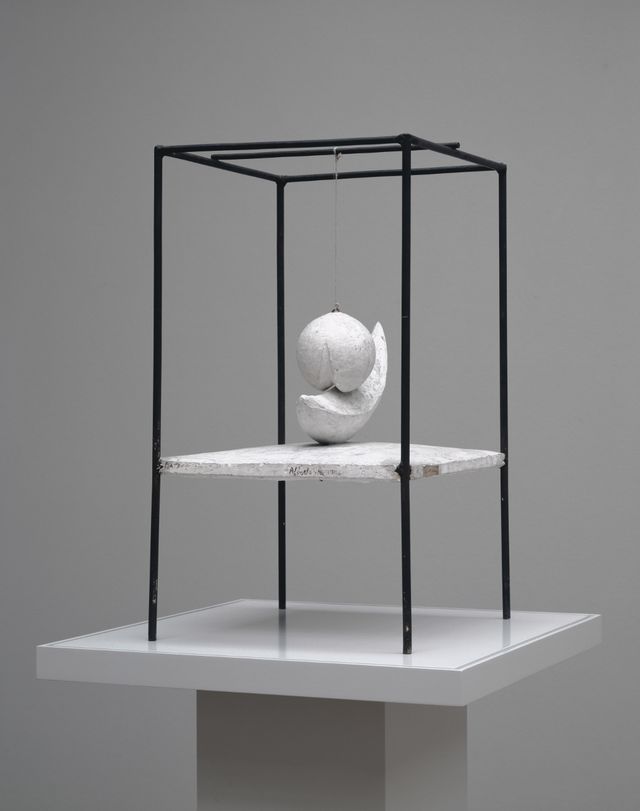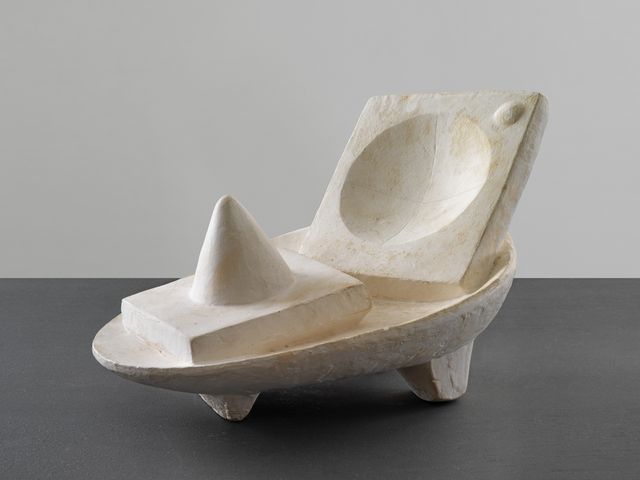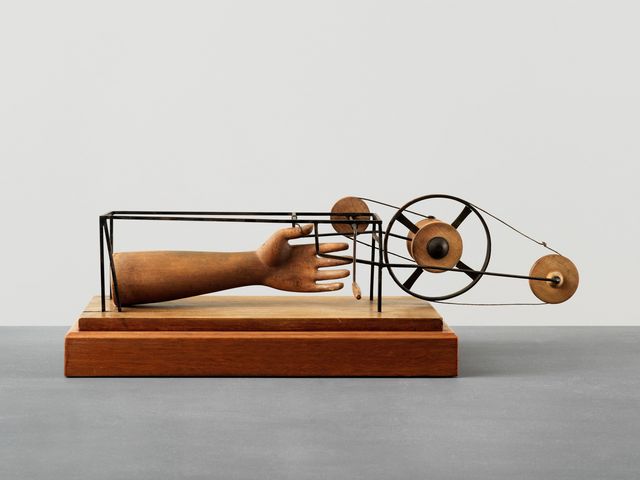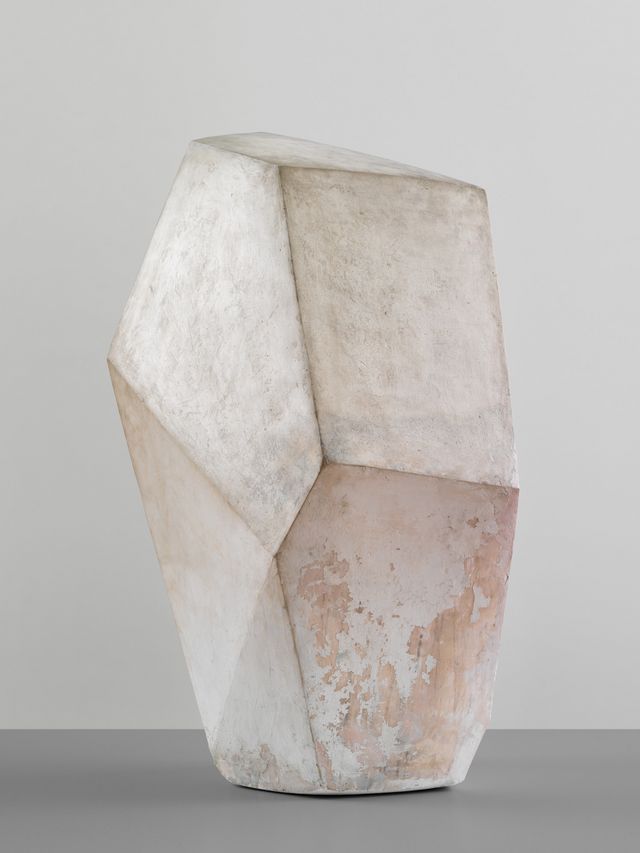
The Surrealist Years
1930–1934
In the spring Pierre Loeb stages Miró – Arp – Giacometti at his Parisian gallery. The exhibited plaster version of Suspended Ball creates a sensation among André Breton and his Surrealist circle; together with Salvador Dalí, Breton invites Giacometti to join the Surrealist movement and Giacometti accepts. During this period he largely focuses on sculpture, painting only rarely when in Stampa.The concept espoused by the Surrealists, that works of art should raise unconscious phenomena to the level of everyday reality, is demonstrated by Giacometti with programmatic clarity in Tidy (1930).

The base is replaced by an everyday object – a small tray into which the user can empty the contents of a pocket. Giacometti also sculpts Cube,Head-Skull and Invisible Object during this period.
The unexpected death of his father on 25 June 1933 hits the artist very hard and he begins to work mainly on the themes of death and the continuity of life. Giacometti seems to abandon his usual compulsion to work and his interest in Surrealist objects and constructions, too, wanes. A final plaster sculpture, 1 + 1 = 3, a cone-shaped female figure, concludes his Surrealist phase.


